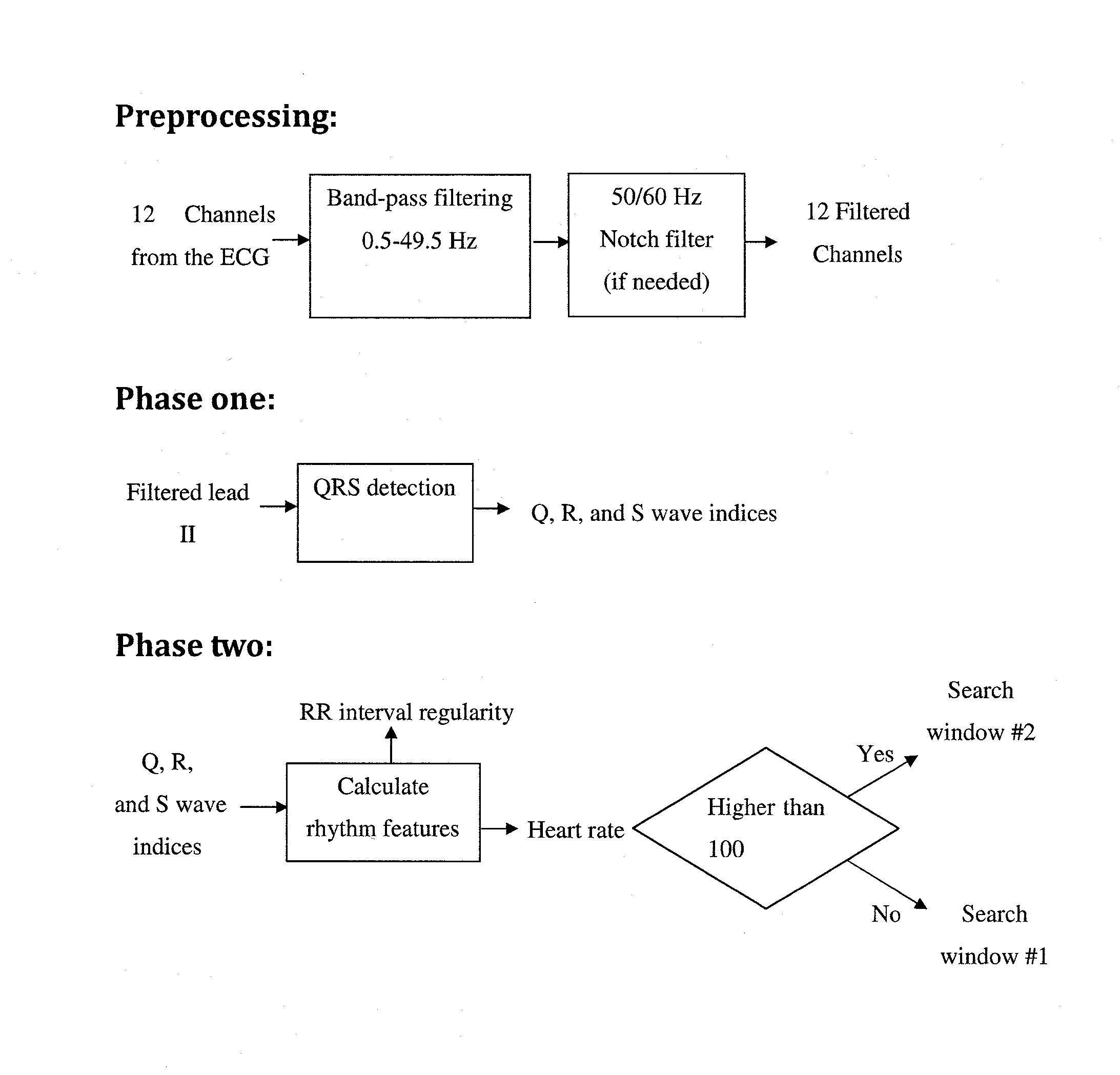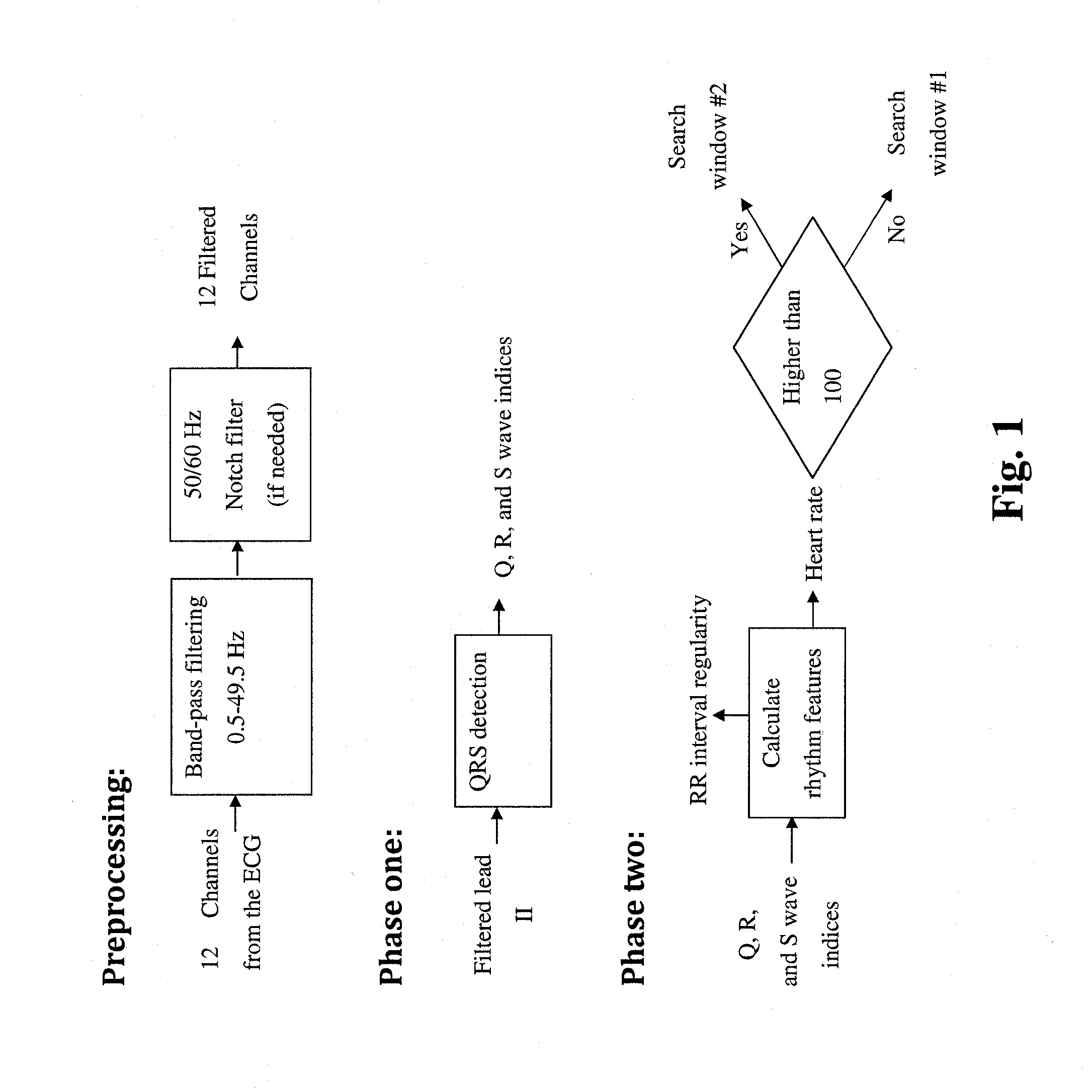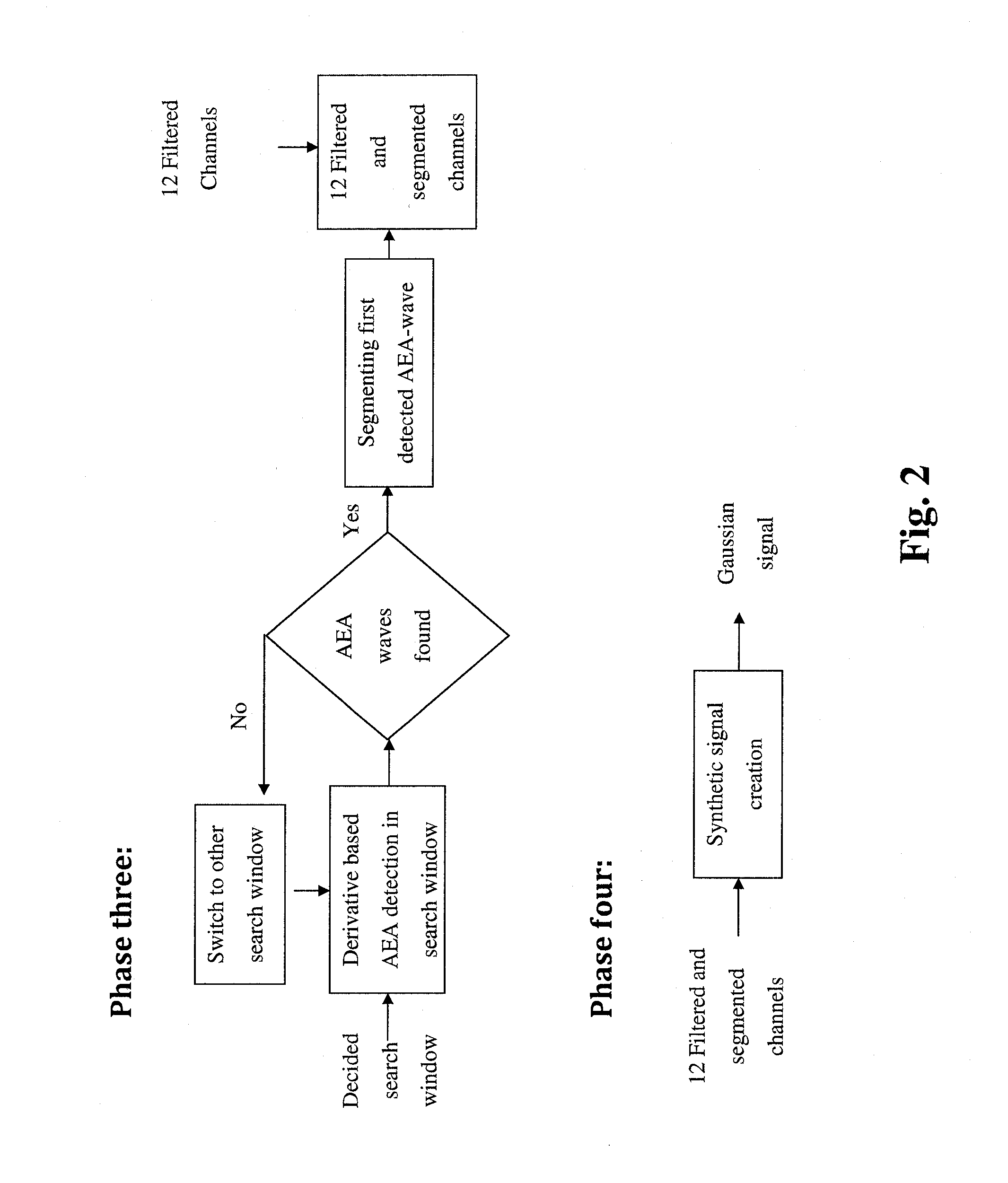Separating clinically relevant sources of electrical activity in ECG signals
- Summary
- Abstract
- Description
- Claims
- Application Information
AI Technical Summary
Benefits of technology
Problems solved by technology
Method used
Image
Examples
example 1
[0056]This theoretical example demonstrates how a clinically oriented set of rules is employed in one embodiment of the invention for distinguishing arrhythmia type, based on processing a surface ECG signal. At least 10 second ECG signal is obtained from a patient to be diagnosed. The signal is filtered to remove noise, and QRS complex is detected These parameters are calculated: R-R regularity and HR (HR stands for heart rate, R-R is a time interval between subsequent R waves). According to the values of the two parameters, the process employs alternative pathways from the measured signal to the final noninvasive diagnosis, as exemplified in FIG. 5. AEA signal is searched both before and after R peak, and according to the search results the automatic decision process continues along its branched path from ECG measurement to the final answers. By using a synthetic signal, all AEA waves are identified in the ECG signal, and the ratio AEA / QRS is determined. The process of the inventio...
example 2
[0057]An ECG record of a patient with atrial flutter was obtained from Barzilai medical center, Ashkelon. The upper part of FIG. 6 shows the ECG signal for an atrial flutter case (lead II). The two vertical lines mark the delineated AEA segment, as found in Phase 3 of the method of the invention. The arrows indicate the true AEA-waves. The middle part of FIG. 6 shows a synthetic signal, as obtained in Phase 4 of the method of the invention. The lower part of FIG. 6 shows the resulting output signal, the arrows indicate the detected AEA-waves
[0058]While the invention has been described using some specific examples, many modifications and variations are possible. It is therefore understood that the invention is not intended to be limited in any way, other than by the scope of the appended claims.
PUM
 Login to View More
Login to View More Abstract
Description
Claims
Application Information
 Login to View More
Login to View More - R&D
- Intellectual Property
- Life Sciences
- Materials
- Tech Scout
- Unparalleled Data Quality
- Higher Quality Content
- 60% Fewer Hallucinations
Browse by: Latest US Patents, China's latest patents, Technical Efficacy Thesaurus, Application Domain, Technology Topic, Popular Technical Reports.
© 2025 PatSnap. All rights reserved.Legal|Privacy policy|Modern Slavery Act Transparency Statement|Sitemap|About US| Contact US: help@patsnap.com



